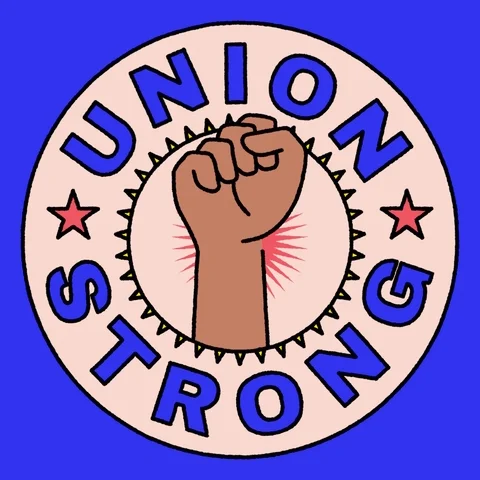
This logo isn't an ad or affiliate link. It's an organization that shares in our mission, and empowered the authors to share their insights in Byte form.
Rumie vets Bytes for compliance with our
Standards.
The organization is responsible for the completeness and reliability of the content.
Learn more
about how Rumie works with partners.
It is the goal of private businesses to make as much profit as possible.

They want to spend as little money as needed. Sometimes that means paying employees less than they feel that they deserve.
Fortunately, as a United States citizen, you have certain rights that can help give you leverage at the bargaining table for better wages.
One of the biggest of these rights is the right to organize or join a labor union.

Did you know?
If you're Canadian, learn about your rights as an employee.
What is a labor union?
A labor union is a group of employees in an organization or industry that band together to bargain for better pay and benefits.
 As an individual, it can be difficult to bargain for better pay and benefits because the employer can easily replace you with someone willing to earn less.
As an individual, it can be difficult to bargain for better pay and benefits because the employer can easily replace you with someone willing to earn less.
As a group, a union can halt business by going on strike, which pressures the employer to meet their demands in order to resume production.

Did you know?
Why should you join an employee union? We have a Byte that answers that question.
What Employers Cannot Do
Employers are prohibited from interfering in your right to unionize or retaliating against you for exercising it.

Threaten to fire an employee or reduce their pay or benefits for taking part in union activities
Punish employees through job transfers or by making their work more difficult if they engage in union activities
Threaten to close a business that has become unionized
Promise special privileges to those who opt out of joining a union
Question employees about their opinions regarding unions
Who is Excluded from These Rights?
Unfortunately, there are some groups who are excluded from the rights outlined in the National Labor Relations Act.

Federal, state, or local government employees
Agricultural laborers
Domestic service employees of private citizens
Anyone employed by a parent or spouse
Independent contractors
Supervisors
Employees of organizations subject to the Railway Labor Act (e.g., railways, airlines)
However, none of these groups are forbidden from unionizing outright and may be protected by other laws, some of which may be at the state level.
Quiz
Which of these people has a legal case against their employer per the National Labor Relations Act?

A. Three adult children were working at their parents' business and they tried to form a union. Their parents fired them.

B. Several employees tried to start a union at their factory. The employer offered raises to some employees if they didn't help form the union.

C. A state employee working in a state that doesn't allow government employees to unionize discussed starting a union with some coworkers. Soon after, she was pulled aside by her boss and told sternly to stop talking about unionizing.

D. A union tried to collectively bargain for higher wages at a coal mine. The owner of the coal mine threatened to shut the mine down and retire instead of meeting their demands.
Quiz
Select all the correct answers that apply:
Employees of parents and employees of the federal, state, or local governments are not protected by the National Labor Relations Act (A and C). On the other hand, most employees of private businesses are, and employers cannot promise special privileges to those who choose not to join or form a union (B). Finally, an employer cannot threaten to close a workplace as retaliation for employees exercising their union and collective bargaining rights (D).
Take Action
Now you know your rights regarding unions!

Would you like to learn about your other rights?
This Byte has been authored by
Adam Minahan
Learning Designer
